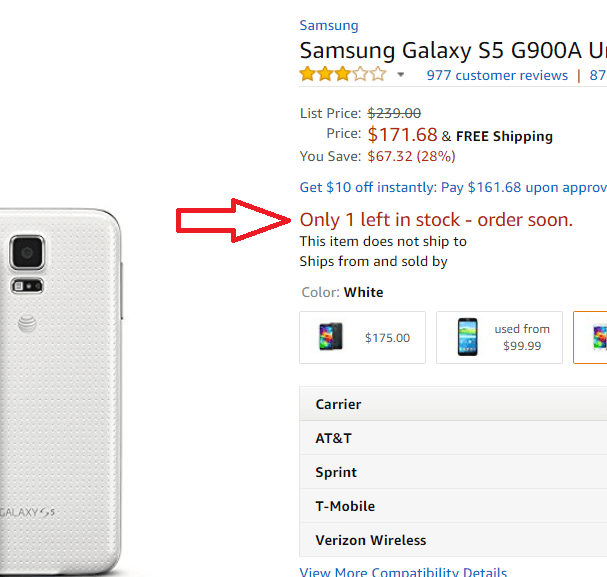 Amazon Prime DayPrime Day was initially a one-day sales ... More may only last a few hours, but that’s your time to shine. Whether or not you were invited to sell deals last year, you’re probably hoping to be in the spotlight in 2018. So, here are a few more tips to help you put your best foot forward on Prime Day 2018.
Amazon Prime DayPrime Day was initially a one-day sales ... More may only last a few hours, but that’s your time to shine. Whether or not you were invited to sell deals last year, you’re probably hoping to be in the spotlight in 2018. So, here are a few more tips to help you put your best foot forward on Prime Day 2018.
Preparing for Amazon Prime Day is a marathon, not a sprint. There’s no time to waste, as our first Prime Day prep post of the year shows. Now is the time to continue your prep work for Prime Day 2018.
That’s because of the sheer scale of this event. You can have tens of thousands of units sold on Prime Day, versus a single one the week before, as was the case on Prime Day 2015. So, be sure to review Amazon’s checklist and Prime Day Communications toolkit from 2017.
Where do you start prepping for Prime Day 2018? There are several ways to get noticed on Prime Day: Lightning Deals, Sponsored ProductsPay-Per-Click (PPC) ad platform for Amaz... More campaigns, or organic traffic. Let’s talk about the first one – by far the most popular and effective.
Lightning Deals 101
Where: Lightning Deals run on the Amazon deals page. They’re advertised on the homepage, on social media, and via email marketing.
What: The Lightning Deals seller selection process is strict and listing restrictions are tight. You’ll know if you have items eligible for Lightning Deals because you’ll find them on the ‘Advertising’ tab in Seller CentralAmazon Seller Central is a portal or a h... More.
How: Test first, submit deal requests later. Order a few and see how they sell, making a rough estimate of the quantities you need. Remember: even a 1-day stock-out on Prime week could be disastrous.
How Much: Be prepared to slash the price by at least 20% for all the inventory you plan to sell. Also, remember to factor in the fixed deal fee (depending on the category).
Why: If your promotion lasts the full 6-12 hours, tops (depending on the marketplace), you could be looking at selling hundreds or thousands of units. The more the merrier, considering the hefty fee per deal mentioned above.
When: If last year’s timeline is anything to go by, the submission window will probably open in early May and stay open for only a couple of weeks. You’ll know if your products are accepted well in advance, generally by the end of May. Keep an eye on your Communication tab in Selling Coach and look for that invite. Stay up to date with the news and browse the forums, so you’ll know when to expect it. As soon as it’s in, get the ball rolling.
No Lightning Deals? No Worries
If you don’t get your invite to Prime Day 2018 promotions, don’t despair. There’s plenty of business to go around, and your organic traffic is bound to spike. Plus, you’ll get to practice for the Q4 holiday season, checking lead times on imported and backordered products.
As long as you embrace the three principles that drive every transaction on Amazon: value, trust, and urgency, you’ll be fine. But bear in mind that each of these can be mishandled and exploited, especially on Prime Day, when tensions run high. So, even the best deals can get lost in the shuffle and even the most experienced sellers can sell at a loss. Here’s what you can do to maximize your sales and profits:
Urgency
Time and product shortage have been shown to speed up buying decisions. Limited supply (scarcity) and time-limited offers (creating a sense of urgency) make Amazon shoppers want to buy sooner.
Some sellers go to great lengths to boost sales and outsmart their competitors. Some claim to have limited stock when they don’t. In so doing, they trick Amazon into displaying the ‘only [x] left in stock’ marker. This makes customers buy for fear of missing out – the dreaded FOMO phenomenon.

The marker is displayed automatically, so there’s no way you can beat it, especially on Prime Day. What can you do about it, then? You can only do one of two things:
- Ignore it. The marker is confusing. Some buyers understand that the seller who won the Buy BoxThis refers to the situation where a sel... More only has ‘x’ units in stock – at least in theory. Some think the whole of Amazon (3rd party sellers included) only has ‘x’ units in stock. Some Prime members don’t believe it. Other buyers don’t even notice the marker is there. Others still are hell-bent on snubbing the Buy Box.
- Wait it out. Every now and then, a buyer comes along and wants more than those ‘x’ units. If your item is good enough, it will sell. Also, it’s only a matter of time before your competitor really does run out of units. If you have a real-time repricer like Sellery, you’ll spot that opportunity and maximize your earnings.
To be clear, we would never recommend lying to Amazon about your stock levels. Sooner or later, Amazon is bound to find a way to close this loophole, leaving these sellers exposed and unprepared for Prime Day. But you should know what you’re up against as a seller who plays fair.
Value
The price/quality relationship is a matter of buyer perception. Everyone wants more bang for their buck, but what is ‘good value’ to your customer base?
Look at last year’s best-selling, most highly rated, and most lucrative items – the ones buyers perceive as ‘good value’. If you can understand the people who bought them, their age bracket, where they tend to live, how they buy, when they buy, and what their expectations are, you’re halfway there.
Of course, as an Amazon seller, you have certain limitations in offering the best value. It all boils down to margins, costs, and prices. More specifically, it’s about how cheaply you can sell your products, how fast you can reprice, and what procedures you have in place to keep margins high. To learn more on this topic, why not drop us a line at sales@SellerEngine.com?
In a nutshell, here are some of the basics of profitability on Amazon:
You and you alone can reduce your costs. From streamlining your picking and packing to improving the way you record and assess your performance – all of this adds to your bottom line. As a side note, SellerEngine can help you work on your performance metrics, if you sign up to our Business Coaching service.
When it comes to prices, your skills alone are not enough. Selling on Amazon is all about demand-based pricing; that is, a combination of bundle pricing, penetration pricing, price skimming, promotional pricing, psychological pricing, etc., all rolled into one. You simply can’t switch from one strategy to the other manually fast enough to keep those profits high. But a real-time repricer like Sellery can.
With a repricer like Sellery, you can protect your margins automatically so that you never sell for less than you need to, even as you’re trying to undercut the competition. That’s because you can set your own margins, minimum prices, and markups, as shown in this tutorial.
Trust
Price is important, but so too is trust. How do you establish trust as a third-party seller on Amazon? Don’t underestimate the power of an emotional connection. Reading your conditionProducts can only be listed on Amazon if... More notes, for instance, is an opportunity for the buyer to establish that bond you wouldn’t otherwise have with them – all the more so if your items aren’t brand new.
All you need to do is relate to your customers. But this means putting all your efforts into improving your titles, product descriptions, product images, and condition notes to make them not only accessible to your base, but also catchy and appealing.
Wishing you success on Prime Day 2018!
So, even if you don’t have the most sophisticated Sponsored Products campaignSellers and vendors have a variety of ad... More out there and you’ve never applied for Lightning Deals, you can still have high-converting content on Prime Day. Please follow our blog for the third installment in our Prime Day 2018 Prep series, where we’ll be discussing the dos and don’ts of Sponsored Products campaigns.

Melanie takes an active interest in all things Amazon. She keeps an eye on the latest developments and keeps Amazon sellers up to speed.




